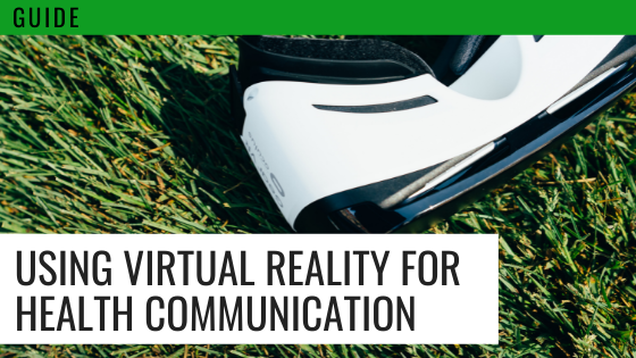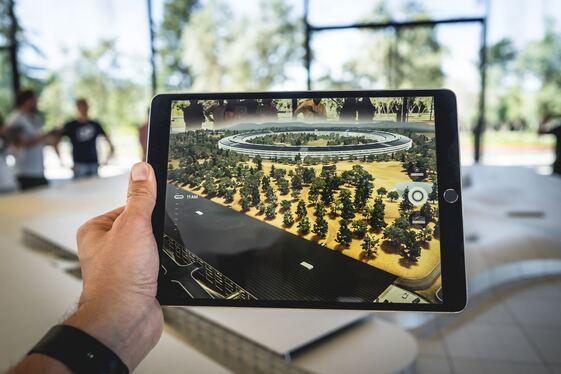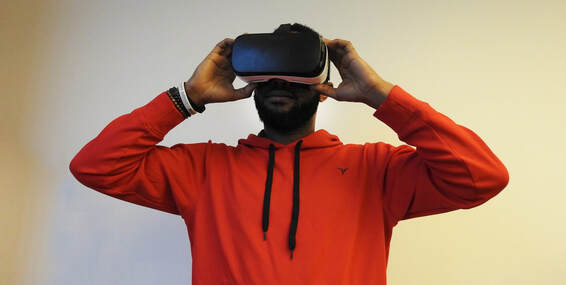|
Have you seen the commercials? Celebrities and influencers are using virtual reality devices to watch movies and play games.
There’s no escaping it. VR is the future. What is virtual reality?
Virtual reality (VR) is an interactive, 3D computer-generated environment. Most commonly accessed via headsets and head-mounted displays, VR can provide users with an immersive 360° experience. Once users are in the virtual world, they are able to see everything around them, as if in the real world.
With augmented reality (AR), a type of VR, the virtual world is superimposed onto the real world. AR is commonly accessed via mobile device cameras, screens and apps. You can also access AR via 3D projection mapping, which superimposes the virtual world onto the real world without headsets or mobile devices.
Why use virtual reality?
Because it’s not a fad. It’s here to stay.
By 2020, the VR software and hardware market is projected to reach $40.4B in total revenue. Companies like Google, Facebook, Samsung, and Sony are racing to innovate in VR gear, with about 250 VR headset styles already available online for purchase. Some of the most popular VR devices include: Samsung Gear VR, Sony PlayStation VR, Oculus Rift, Google Cardboard, HTC Vive (powered by SteamVR), Microsoft HoloLens, and Razer OSVR.
About 22.4M Americans are already using VR, and by 2020, a projected 1B people will access VR worldwide. In particular, VR has strong appeal amongst millennials (about 44% of people interested in VR are ages 18-34) and males (69% of people intending to buy a VR device are men). Virtual reality has already been used in journalism, architecture, business, and manufacturing. There have also been several applications of virtual reality in health and medicine, including use of the technology to treat pain, anxiety attacks, PTSD and other medical issues; to train medical students and food handlers; to assist in the development of social skills; to reduce cravings for tobacco use; and to improve patient-provider communication. With VR technology, you can: 1. Bring Digital Elements into Real-World Experiences
VR and AR technology is being used by social and digital media platforms and other big brands to enhance consumer experiences via the following features:
What you’ll need: Facebook AR Studio, Snapchat Lens Studio, Oculus Rift’s Quill, Amazon Sumerian, Apple’s ARKit, and MapMapper are a few of the developer tools and software programs available to create AR/VR/3D content.
2. Develop Immersive, 360-Degree Content
360-degree video and images can take experiential storytelling to the next level. For 360-degree content, video footage and images are captured from multiple angles and then stitched together. For video, this is done via a special rig of multiple cameras or one camera with multiple lenses. For images, this can be done on a mobile device via apps like Street View. While interactivity of 360-degree content is low -- the location of viewers is fixed and limited to the angles captured by the camera(s) -- viewers do gain a sense of depth and detail that goes beyond traditional content. They can engage with 360-degree content on multiple planes and that spatial element makes for an immersive experience.
What you’ll need: YouTube, Facebook, and Twitter all have applications for uploading and launching 360-degree video and images. Once published online, 360-degree content can then be viewed in 360x180 format on VR devices.
3. Transport People into Your Narrative
The immersive and experiential nature of VR provides an opportunity to not only create a narrative, but to also transport people deep into the world of your narrative. VR presents a new framework for storytelling, because with VR, users can quite literally walk in someone else’s shoes. With virtual environments, you’re transporting users into a different world not just visually, but spatially. They can interact with the world. They can "live" in that world. Think about it this way: When you’re watching a movie, you can be transfixed and glued to the screen. You can feel as though you’re connecting with the story that is unfolding in front of you and getting a great glimpse of the world in which that story is taking place. But with VR, you’re in the story. You’re not just seeing it; you’re experiencing it. You are immersed and surrounded by it. And sometimes, you can be an active part of it.
What you’ll need: VR content development and design companies can assist you in building a virtual environment and experience that aligns with your health communication and marketing goals.
Trying to figure out budget? Check out this VR cost calculator. How is VR being used for health communication and marketing?
The application of VR to health communication and marketing is still being explored. Here’s what’s been found so far on virtual reality, augmented reality, virtual environments and health:
Additional Resource: There’s a great book on virtual environments and health, if you’re looking for additional information: The Digital Patient: Advancing Healthcare, Research, and Education.
What is the future of VR?
Besides upgrading virtual environments like Second Life to be compatible with VR headsets, the next phase of VR is creating virtual experiences that can be shared by multiple people. There are VR applications and technology that allow multiple users to join and interact in the same virtual space, and this technology is being explored and built upon.
As public health communication and marketing professionals, we must examine effective ways to adapt our strategies and tactics as the digital landscape changes. Share your experiences with virtual reality for health communication in the comments below. And sign up for our newsletter to get updates from us!
Last updated: December 5, 2018
0 Comments
Your comment will be posted after it is approved.
Leave a Reply. |
�
Learn about our blog submission guidelines. >>
The views and opinions expressed by individual authors on this blog are their own and do not necessarily reflect the official policy or position of Let's Talk Public Health.
Categories
All
|
|
Highlights
Explore
Connect
|
© 2024 Let's Talk Public Health, LLC. All rights reserved. | View our Privacy policy | Terms of service | Disclaimer | Editorial policy.





 RSS Feed
RSS Feed